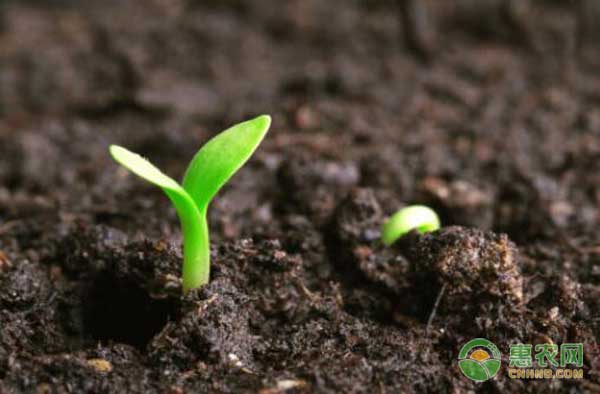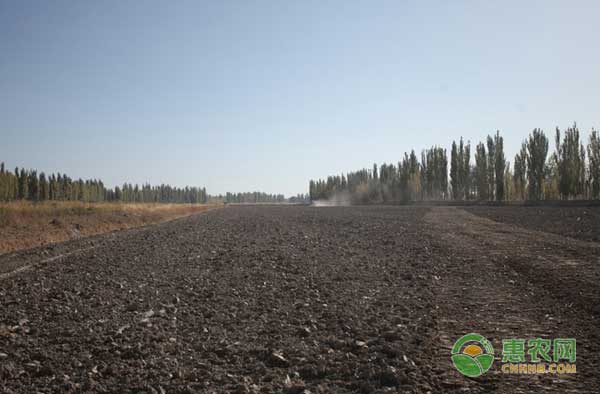Soil pH ranges from 0 to 14, which are acidic, neutral and alkaline, and soils that are too acidic or over-alkali cannot grow healthily. So how do you judge the imbalance of soil acidity and alkalinity? What is the impact of soil acid-base imbalance? How to balance soil pH?
China divides the soil acidity and alkalinity into five grades: strong acid soil (pH less than 5), acid soil (pH 5.0-6.5), neutral soil (pH 6.5-7.5), alkaline soil (pH 7.5-8.5), Strong alkaline soil (pH greater than 8.5). Southern red soil, yellow soil and so on are mostly acidic reactions, pH between 5.0 and 6.5, and individual soils even have a pH of 4. The soil in the north is generally neutral or alkaline, with a pH between 7.0 and 8.5. Neutral soil has the highest fertilizer utilization rate.

1. Identification of soil acidity and alkalinity
1. Judging acidic soil and alkaline soil by soil source
The soil in the forest and the humus in the gully are generally black or brown soil. They are relatively loose, fertile and well permeable. They are very good acidic humus.
2. Judging acidic soil and alkaline soil through surface plants
When collecting soil samples, we can observe the plants growing on the surface. Generally, the soils of pine, cedar, and rhododendron are mostly acidic soils; while the soils of growing millet, sorghum, and brine are mostly alkaline soils.
3. Judging acidic soil and alkaline soil by soil color
Acidic soils generally have a darker brown color, while alkaline soils have a lighter color such as white or yellow. In some saline-alkali areas, there is often a layer of white saline.
4. Judging acidic soil and alkaline soil by hand
The acidic soil is generally soft in the hand. After loosening, the soil is easy to spread and is not easy to agglomerate; the alkaline soil is very hard to hold in the hand, and it is easy to agglomerate without loosening after loosening.
5. Judging acidic soil and alkaline soil by the state after watering
After the acidic soil is watered, the infiltration is faster and does not take white bubbles and the water surface is relatively sloppy; the alkaline soil is slowed down after watering, the surface of the water is white foamed, and sometimes there is a layer of white alkaline substance on the surface.
6. Determine acid soil and alkaline soil by texture
Acidic soil texture is loose and breathable and permeable; alkaline soil texture is hard and soil is easy to compact.
7. Determine acid soil and alkaline soil by pH test paper
The soil sample was dissolved in distilled water for a while, and the pH test strip was placed therein for 2 seconds, and then taken out and compared with the color chart. pH>7 is alkaline soil, and pH<7 is acidic soil.
Second, the effect of soil acidity and alkalinity on plants
Most plants are difficult to grow at pH > 9.0 or < 2.5. Plants can grow normally over a wide range, but various plants have their own suitable pH.
Acidic plants: Rhododendron, Bilberry, Camellia, Chinese fir, pine, rubber tree, stellite; Calcium plants: alfalfa, grass rhinoceros, southern scorpion, cypress, eucalyptus, eucalyptus, etc.; : 柽柳, 沙枣, 枸æž, etc.
2. Plant pests and diseases are directly related to soil acidity and alkalinity:
(1) Underground pests often require a certain range of pH environmental conditions such as bamboo sorghum and chafers;
(2) Some diseases only occur within a certain pH range, such as rickets often occur on alkaline and neutral soils.
3. Soil active aluminum:
In strongly acidic soils, there are many aluminums. Plants living on such soils are often resistant to aluminum or even aluminum (sapphire, tea tree); but for some plants, aluminum is toxic, and growth is inhibited when aluminum is rich in soil. Studies have shown that aluminum poisoning is an important cause of the decline of plantation soil fertility.

Third, the effect of soil acidity and alkalinity on nutrients
1. The reason why plants are sensitive to soil acidity and alkalinity in the normal range is because soil pH affects the concentration of various ions in soil solution, affecting the effectiveness of various elements on plants;
2. The effect of soil acidity and alkalinity on the availability of nutrients:
(1) Nitrogen is more effective at 6-8, because the activity of nitrogen-fixing bacteria is reduced at less than 6, and nitrification is inhibited when it is greater than 8.
(2) Phosphorus is more effective at 6.5-7.5, because it is easy to form iron phosphate and aluminum phosphate when it is less than 6.5, and the effectiveness is lowered. When it is higher than 7.5, calcium dihydrogen phosphate is easily formed;
(3) The leaching effect of acidic soil is strong, and potassium, calcium and magnesium are easily lost, resulting in the lack of these elements. When the pH is higher than 8.5, the soil sodium ion increases, and the calcium and magnesium ions are replaced to form a carbonate precipitate. Therefore, the effectiveness of calcium and magnesium is best at pH 6-8;
(4) The five trace elements of iron, manganese, copper, zinc and cobalt are highly soluble in acidic soils; molybdate is insoluble in acid and soluble in alkali, and is easily deficient in acidic soil; It is effective at pH 5-7.5.
Fourth, the effect of soil acidity and alkalinity on fertility
1. Reduce the effectiveness of soil nutrients.
The effectiveness of phosphorus in soil is obviously affected by acidity and alkalinity. When the pH exceeds 7.5 or lower, phosphoric acid and calcium or iron or aluminum form a delayed state, which reduces the effectiveness. Calcium, magnesium and potassium are easily replaced in acidic soils and are easily lost. Calcium and magnesium have low solubility and strong effectiveness in strongly alkaline soils. The trace elements such as boron, manganese and copper are greatly reduced in alkaline soil. The precipitation of molybdenum in strongly acidic soils with free iron and aluminum can reduce the effectiveness.
2. It is not conducive to the benign development of the soil and destroy the soil structure.
Strongly acidic soils and strongly alkaline soils have more H+ and Na+, and lack of Ca2+ is difficult to form a good soil structure, which is not conducive to crop growth.
3. Activities that are unfavorable to soil microorganisms.
The optimum pH for soil microorganisms is generally a neutral range between 6.5 and 7.5. Peracid or over-base will seriously inhibit the activity of soil microbes, thus affecting the conversion and supply of nitrogen and other nutrients.

4. It is not conducive to the growth and development of crops.
General crops are most suitable for growth in neutral or near-neutral soils. Beet, sable, and red clover are not suitable for acid soil; tea requires strong acidity and acid soil, and neutral soil is not suitable for growth.
Plants can grow normally over a wide range, but various plants have their own suitable pH. For example, the pH value of apple soil is 5.3~8.2, and the optimum range is 5.4~6.8. When the pH value of the soil exceeds the optimum range, the growth of the plant is hindered as the pH increases or decreases. Most plants are difficult to grow at pH > 9.0 or < 2.5.
1 When cultivating crops, it is first necessary to clarify the suitable range of pH of the cultivated crops, whether it is suitable for acid or neutral soil or suitable for alkaline soil. If the soil pH is not suitable, adjustment and improvement are needed.
For the acid-excessive soil, 20 to 25 kilograms of lime per acre can be applied per year, and the organic fertilizer should be applied. It is forbidden to apply only lime without applying organic fertilizer, so that the soil will turn yellow and thin. Apply 1 to 3 months before sowing to avoid affecting crop germination and growth. It can also apply 40 to 50 kilograms of plant wood ash to neutralize soil acidity, and better regulate soil water and fertilizer status.
For alkaline soils, 30 to 40 kg of gypsum per acre is usually applied as a base fertilizer.
When the soil is too alkaline, a small amount of aluminum sulfate can be added (application of phosphate fertilizer is needed), ferrous sulfate (effective effect, but the action time is not long, it needs to be applied frequently), sulfur powder (slow effect, but the effect is the most lasting), humus Acid fertilizer, etc., the specific application amount is determined according to the soil pH.
2 routine methods of soil improvement
(1) Add organic fertilizer. This is the most fundamental measure to adjust the pH of the soil and can improve the cushioning properties of the soil. Soil buffering is closely related to the content of humus in the soil, while humus is mainly derived from organic matter. Therefore, it is necessary to emphasize the application of organic fertilizer in agricultural production.
(2) Rational application of chemical fertilizers. Generally speaking, acidic soils are selected from alkaline fertilizers such as ammonium bicarbonate, and phosphate fertilizers are selected from calcium and magnesium phosphates. Alkaline soil is selected from soluble acid fertilizers such as ammonium chloride and superphosphate. Urea is a neutral organic nitrogen fertilizer, which can be applied in acid-alkali soil. However, it can be irrigated 3 to 5 days after application to prevent loss and improve fertilizer efficiency.
(3) Appropriate application of alkaline fertilizers with strong acidity (below pH 5.5), soil viscosity, and high organic matter content. Appropriate application of alkaline fertilizers is about 50~100 kg per acre, every 2~ It is applied once every 3 years; the alkaline soil can be adjusted by applying gypsum (calcium sulfate) 15~25 kg. Pay attention to proper use to avoid soil salinization.
Soil pH has a great influence on planting crops. Therefore, it is necessary to understand the characteristics of crops, select suitable crops in soil conditions, or adopt soil improvement methods. The above content hopes to help you. If you want to know more about agricultural technology, please pay attention to the Hui Nong School!
4 Wire Intercom System,Analog Intercom System Doorbell,China 4 Wire Video Door Phone,4 Wire Connection System,4 Wire Intercom
Zhuhai Mingke Electronics Technology Co., Ltd , https://www.mingke-tech.com